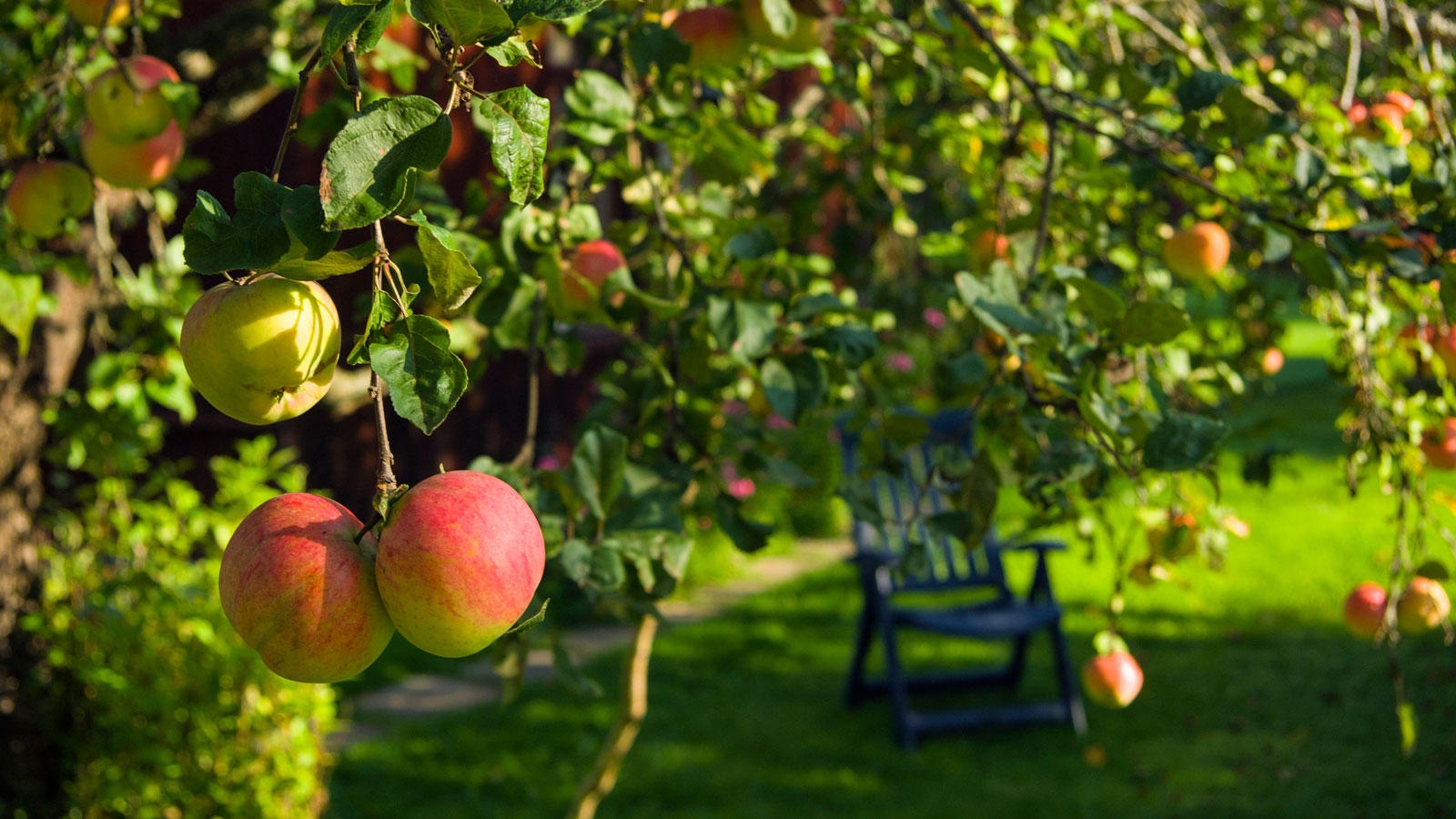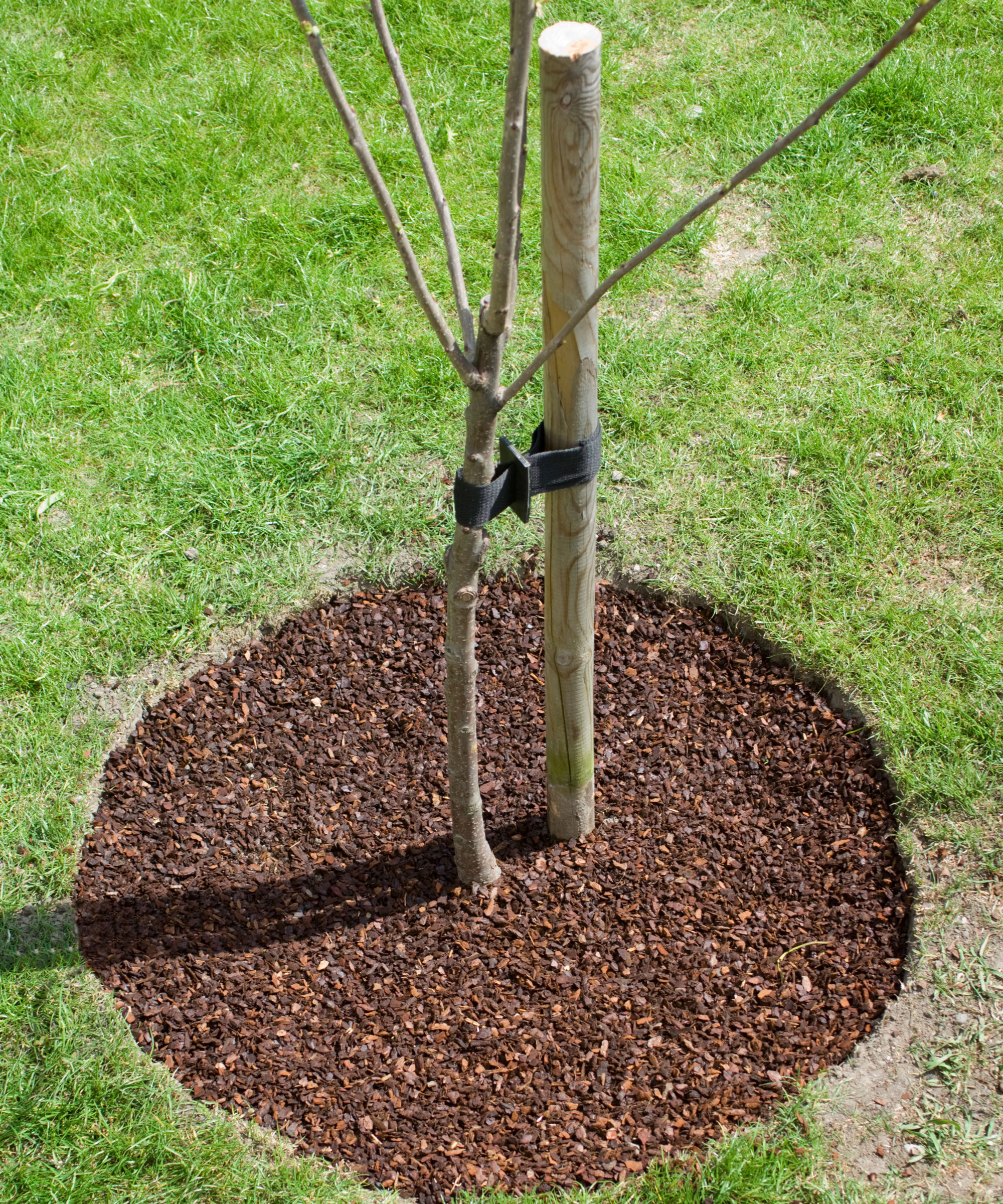5 things you need to do with your fruit trees in November so they're prepped for winter - and laden with fruit next year
Fruit trees need a little TLC to get them in shape for winter and their growing endeavours next year but there is one important thing you shouldn't do now

If you've already harvested the last of the fruit crop from your trees you might be wondering if there's anything else you need to do in November. Fruit trees start to enter their dormant phase around now so it's definitely the right time to take stock.
Now is the best time to plant fruit trees too, so if you're thinking you want to grow your collection you will need to be quick and get in ahead of any incoming frosts, unless of course you live in a warm USDA zone.
When you're generally tidying up your modern garden ahead of winter it's a good idea to keep a close eye on fruit trees and remove any windfall fruit and fallen leaves that may be collecting around the base as these can rot and attract pests that could then take up residence in your fruit trees and cause damage. Clean up around fruit trees carefully, so as not to leave a winter home for insects.
November is also the month to cut out any diseased or damaged branches as long as frost isn't forecast, but this is more of a tidy-up than a full-scale prune. If you grow fruit trees in pots it's also time to move them to a frost-free place, and check regularly to make sure the roots haven't dried out.
Now find out the other key things to factor in when it comes to what to do to your fruit trees in November.

1. Check the health of your soil

'Fruit trees can certainly benefit from care in November,' says ISA-certified aborist Ryan Mange of Monster Tree Service. 'In northern climates, fall is typically when root growth is happening and trees are starting to go dormant. This is a great time to have an analysis done on the soil and add amendments based on soil test results.'
Healthy soil is vital to fruit tree nutrition. Indicators of soil quality include structure, water holding capacity, pH, amount of organic matter, and plenty of microbial activity. Ideally your soil should be a sandy loam, granular and porous to enable good water and air circulation. A slightly acidic soil pH of around 6.0 is best for fruit trees.
The Livingetc newsletters are your inside source for what’s shaping interiors now - and what’s next. Discover trend forecasts, smart style ideas, and curated shopping inspiration that brings design to life. Subscribe today and stay ahead of the curve.
If it's been a dry fall where you are, it may be necessary to water your fruit trees thoroughly before they go dormant. They need enough water to reach the roots so they can be properly hydrated before they go into winter mode.
2. Establish a mulch zone

'Fall is also a great time to establish a mulch zone under the drip line of your fruit trees if one does not exist already,' says Ryan Mange. 'This will help with year-round water retention and add important organic matter back into the soil as the mulch breaks down.' The dripline is the area located under the outer circumference of the tree branches.
Mulch insulation works by containing heat and moisture in between the mulch cover and the ground soil, preventing soil from dying out and freezing. 'This keeps tree roots warm and wet throughout the winter season,' explains entomologist Emma Grace Crumbley of Mosquito Squad.
While mulching is great for insulating the roots of fruit trees, it can attract pests too, adds Emma. 'Insects also prefer warm, wet areas as they're highly susceptible to drying out. Many insects take advantage of mulch cover such as woodchips or leaf litter once temperatures warm up in spring.'
The solution? To prevent future infestations, pull back mulch after the cold season concludes, and avoid overwatering plants with mulch cover.
3. Protect fruit trees from damage

Most fruit trees are very hardy while dormant over the winter as temperatures do not fall low enough to harm them. The most important thing to consider is if your fruit tree is well adapted to your specific region. If you live in a climate with more severe winters it may even be necessary to choose cold-resistant cultivars if your current fruit trees aren't thriving.
Fruit trees you can grow in pots are much more vulnerable than trees in the ground, which are partially insulated by the soil. Try layering straw on top of the soil to protect the roots, as they are more exposed to the cold. Citrus trees like lemons are best overwintered in a cool porch or other covered area.
One of the biggest threats to young fruit trees in winter are hungry critters. 'In areas with heavy deer populations steps should be taken, such as adding protective fencing, to deter deer from damaging fruit trees,' says Ryan Mange. In addition to deer, voles can be a problem, so taking appropriate preventative measures is critical when these are a threat. Physical barriers such as mouse guards work best.
In addition, check stakes to make sure fruit trees are tied securely and therefore reduce chances of windrock damage.
4. Look out for pests and protect fruit trees from them

'There are many insect pests in fall that feed on the fruit from fruit trees as well as on the woody trees themselves, although not many insects are active when temperatures drop,' says Emma Grace Crumbley. Instead, these insect pests are overwintering in nearby hiding spots or fallen fruit.
'Codling moths, for example, are a major pest of apples,' explains Emma. 'During winter, these pests may not be actively seen crawling about, but it’s very likely they're lingering in dropped apples or silk cocoons near the tree they infested. To prevent these pests from taking over, be sure to remove fallen fruit from the base of the tree.'
Japanese beetle grubs are another fruit tree pest, taking refuge in the soil until ground temperatures heat up, then emerging to eat the flowers, leaves, stems, and fruit. To protect your plants, pull back mulch after the last frost of the season to remove additional hiding areas and prevent excess moisture build-up.
Winter wrapping trees with Kraft paper, burlap, or tree tents (depending on the tree species) can also help keep pests at bay as well as protecting the tree from harsh winds. 'As trees lose their leaves due to cold weather, their once shaded trunks are now exposed to direct sunlight,' explains Emma. 'Even though air temperatures might be lower, trunks can heat up and cause damage to the tree. When trunks are exposed to rapid heating and cooling from sudden sun exposure, trunks crack and create new entry points for insects to take advantage of.'
Some arborists paint the bottom of fruit trees white to prevent the tree from overheating and cracking. Think of it as a sunscreen for trees, only instead of protecting trees from UV rays, the paint keeps the newly exposed trees cooler in the cold months.
5. Hold off pruning fruit trees in November

It’s better to avoid pruning fruit bushes and fruit trees in November as this can stimulate new growth at a time when the tree is getting ready to go into dormancy. Pruning fruit trees in fall encourages new growth ahead of the winter season, which may leave them exposed to frost damage.
Pruning also tends to lessen hardiness, so pruning in early winter can damage the tree if this is followed by extreme temperatures, as it takes two weeks for the tree to recover.
Light pruning of any dead, diseased or unsightly branches in fall is fine, as long as you don’t live in an area with a particularly harsh winter. Pruning trees that are already established and hardened won’t be too much of a problem.
The majority of fruit tree pruning is generally done in winter or spring. The best time to prune fruit trees is late winter into early spring when it will least affect winter hardiness and tree health.
So you can cross off pruning from your list of what to do to your fruit trees in November and instead spend the time planning what new varieties to add to your collection.
Lifestyle journalist Sarah Wilson writes about garden design and landscaping trends. She has studied introductory garden and landscape design, and also has an RHS Level 2 qualification in the Principles of Plant Growth and Development. She is a regular contributor to Livingetc.com, and also writes for Homes & Gardens, Country Living, Country Homes & Interiors, and Modern Gardens magazines. Her first job was at Elle magazine, during which time a trip to the beautiful La Colombe d'Or in St-Paul-de-Vence led to an interest in writing about all things botanical. Later as lifestyle editor at Country Homes & Interiors magazine one of the highlights were the run of captivating country gardens that were featured.


